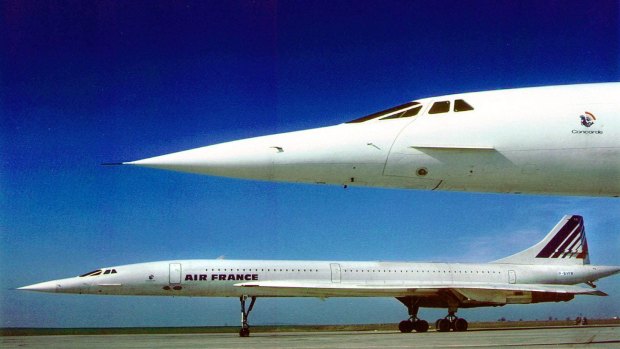This was published 8 years ago
New Concorde flights: Club Concorde aims to have supersonic jet flying again in 2019
By Craig Platt

A private group hoped to get the supersonic aircraft back into the sky.Credit: AP
The Concorde is set to fly again after a group of enthusiasts secured funding to help bring the supersonic passenger jet back to the skies.
Club Concorde, which consists of former Concorde pilots, charterers and frequent flyers, among others, wants to bring the plane back as an independent service.
The Concorde originally flew as part of the British Airways and Air France fleets.
London's Daily Telegraph reports that Club Concorde aims to buy a Concorde to place near the London Eye on the Thames to create a tourist attraction, and to return another Concorde to active service.
The group reportedly has £40 million ($86 million) in funding for the tourism project, plus a £120 million reserve fund to get the Concorde in the air. It aims to have the jet flying by 2019 (the 50th anniversary of the first Concorde flight).
The Concorde first flew in 1969 and entered commercial service in 1976. It flew the trans-Atlantic route until 2003. However, the end of the Concorde era is generally considered to have begun after a fatal crash involving an Air France Concorde in 2000.
The Concorde could achieve double the speed of sound and carry between 92 and 128 passengers. The aircraft could fly from New York to London in about three hours. However, fares were expensive, costing more than £4000 ($8648) for a one-way flight between the US and Britain.
The revival of fast, long-haul travel has been the dream of many since the end of the Concorde service. Various projects have considered ways to increase the speed of passenger aircraft.
NASA and Lockheed Martin have worked on designs for a supersonic craft dubbed "Son of Concorde". One of the supersonic Concorde's big drawbacks was its inability to fly at speed over land because of the sonic booms created.
Lockheed Martin is working on ways to reduce the impact of sonic booms.
Hypersonic technology, which has been tested in the Australian outback, aims to develop aircraft that can fly at Mach 8 (8600km/h).
Meanwhile, Richard Branson recently told Traveller.com.au that his space travel company, Virgin Galactic, was considering options that could mean passengers travelled from Australia to London in less than two hours.
See also: Airline reveals the future of plane design
See also: The best and worst airline seats, named by the experts
Sign up for the Traveller Deals newsletter
Get exclusive travel deals delivered straight to your inbox. Sign up now.